10 Types of Celosia Varieties for Incredible Garden Colors
Author: Jen Worst | Editor: Omar Alonso
Review & Research: Jen Worst & Chris Miller
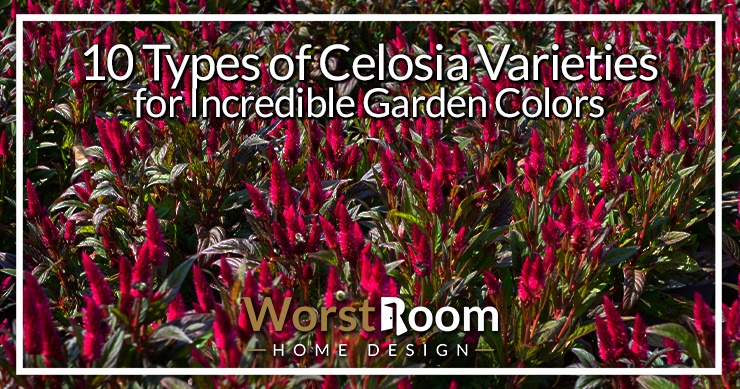
The many types of celosia are among the most versatile flowering plants out there. They have beautiful bright-colored plumes that you can see on top of the foliage and are easily recognizable. The leaves are broad and add to their aesthetics.
Celosia inflorescences can last for months and have many benefits. When we say versatile, we mean it. Celosia can be worked as a garden flower or used as vegetation because it is edible. It can be put up like flowers on a bouquet or simply applied as food ingredients.
It isn't just one kind of flower, there are different types of celosia out there. So which one should you pick? We are here to discuss the variants of celosia to give you a clearer picture of these bold and functional flowers.
10 Types of Celosia
The characteristics of celosia are very diverse. It can either be a tender annual or a perennial plant depending on the planted region. They'll be perennial in USDA hardiness zones of 10 through 12. The name of the genus Celosia comes from the Greek word "keleos" which can be translated as "burning" as a description of the flower's physical appearance.
The varieties of celosia are best suited in warmer weather where they can last through drought, temperature rise, and yet bloom in the spring season. In cold climates, it is more like an annual flower. As we said, celosia is not restricted to one kind, rather it has many varieties. Let's check out the most commonly found celosias out there.
Celosia Plumosa
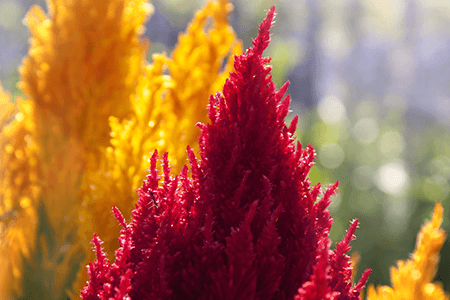
A plumed celosia is a very common flower plant, and it is widely used for decorating gardens, walkways, doorways, and other places. It has large plumes with vivid inflorescences. The flower blooms mainly during spring and survives through the fall season.
The bright-colored flowers are so flashy that sometimes they look unnatural. It tends to last better in cold seasons. Unlike other flowers, the Plumosa will not last for many years. It can survive for a year, and later you need to replant it to extract benefits.
The Celosia Plumosa produces flowers ranging from red, orange, pink, yellow, and such. They can be fitted in containers, garden beds, and any types of planters in indoor area without much fuss.
Keep in mind, that to prevent fungus and dead bits on these celosia varieties, the soil must be moist and well-drained. This planet doesn't need much care and so it can be cultivated fairly easily.
Plume Celosia
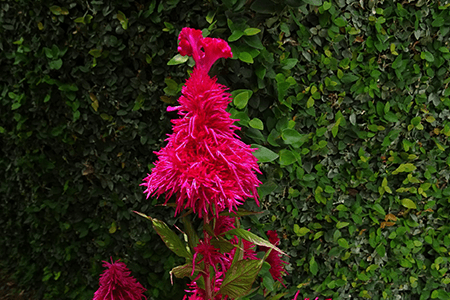
The scientific name of this particular variation is Celosia Argentea. It is also known as plumed cockscomb and is found in tropical zones. This plant blooms during the mid-spring and lasts till summer.
Moreover, the growth of these flowering plants depends on the soil and weather conditions. In moist soil and full sunlight, they are the most active and functional.
These celosia flowers are used for mass harvesting and the flowers on these plants can last up to 8 to 10 weeks if taken care of. When it comes to appearance this plant has dark green leaves and flowers that can be pink to violet.
This plant is not only for gardening needs, it has many positives like it can be used to make soaps, used as edible food ingredients, and much more.
Different countries mark these types of celosia with ranging names like Roosters comb, Lagos spinach, velvet flower, and many other names.
Crested Cockscomb
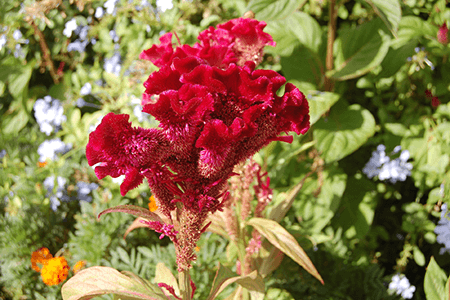
Flowers like Crested Cockscomb also have a generic name of Celosia Cristata. The name is derived from the appearance of a rooster's reddish crown.
At first, these flowers were only native to India and later faced near extinction. It was revived by Gardening enthusiasts from China, Burma, and India. They started planting the crested cockscomb near religious places because it is believed to have religious values.
Now, these flowers are cultivated all around the world because of their hardiness. It can tolerate the hottest of temperatures and will require sunlight to showcase its blossoming.
The flowers that grow on this plant are simply exquisite and pretty to look at, thus it is mostly used for embellishing landscapes.
The flower, leaves, and stems of these celosia types can also be used as vegetables and many countries have adapted to its edible properties. For example, in Korea, they are used to garnish rice dishes.
Wheat Celosia
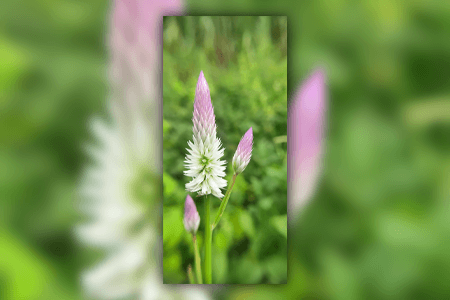
Also known as Celosia Spicata, it kind of resembles wheat bundles and hence the name. It is native to North Africa, North America, and South America and is known as an annual plant. The flowers bloom best in the regions such as USDA 7 to USDA 11 zones.
It has many stems branching out, making it bushier than other varieties. The topping flower can grow up to 3 feet with green leaves. An eye-catching feature about this plant is that the leaves have burgundy shades which make it stand out and complement other nearby plants.
The inflorescences on the plumes come in various colors from pink, red, purple, and others. Wheat celosia is one sturdy plant with flowers that can last the winter and live through fall.
As you know that celosias are edible, the wheat celosia has a similar taste to spinach, which is why it has been widely accepted as a leaf vegetable.
Many Flower Cockscomb
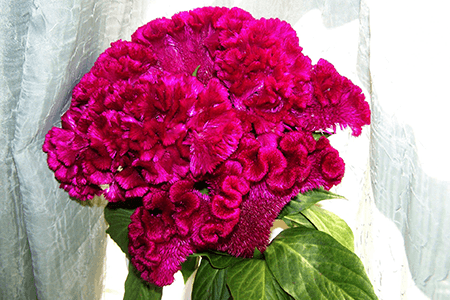
Scientifically known as Celosia Floribunda, is a shrub that is native to North America. It is one of the tallest celosias out there, it can reach 13’’ in height.
There are greenish branches that carry the inflorescences on top. It has oval leaves with pointed ends. The flowers that grow on it have a paperwhite shade to them. I like them so much when paired with purple types of violets in terms of color combinations.
The Many Flower Cockscomb is not as attractive as other ornamental celsius, but they have their value in the ecosystem. These types of celosia provide nectar for many different species. The blossoming time is from March to October.
West Indian Cockscomb
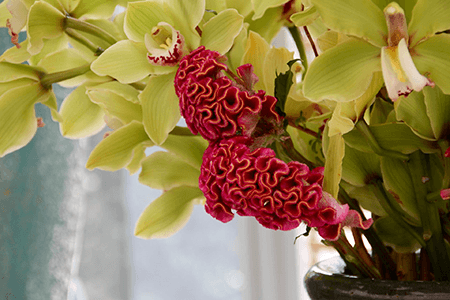
Biologically termed Celosia Texana, it is a perennial flower plant that originated in Florida and Texas. You are not likely to find these plants in abundance because they are known to be endangered and are in the process of being cultivated in South American regions to keep them surviving.
These plants are still available in selected and reserved areas, and if you are lucky you can witness these extraordinary flower plants.
Celosia Spinach
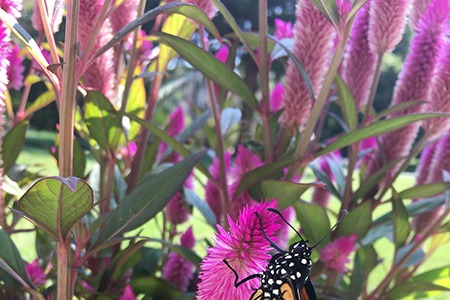
It has the scientific name Celosia Trigyna. These are best known as wool flowers because of their unique shape. The flower top can run up to 3’’ in height and is cultivated from seeds. This plant is one hardy species that can survive drought without any problems.
When celosia spinach varieties are matured, the leaves are identical to the shape of a cabbage. In Africa, it is consumed as vegetables, but other countries use it as mixing ingredients because the individual taste is on the bitter side.
There are tinges on the branches that are silver in color, thus it is also called silver spinach. The flowering season is from March to July, and this plant is also known to be semi-aquatic. You are likely to find these flowers in woodlands and rocky grounds.
Albahaca Celosia
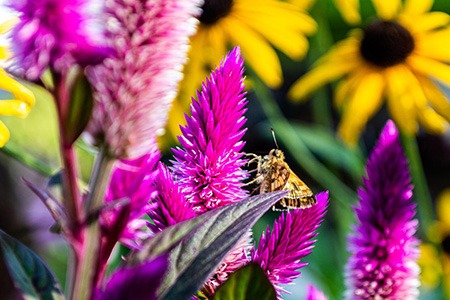
Let's talk about a rare celosia, the Celosia Virgata. These plants grow in the suburbs as herbs. It is mostly seen in the Caribbean islands and no other places. It grows stems like weeds and is a few inches in height, perfect to cut and bring inside into small types of vases.
The flowers that grow are more like spikes, and they look pretty unique. The green leaves compliment the flowers well. Might not be as attractive as other celosias, but their rarity is what makes them special.
Celosia Isertii
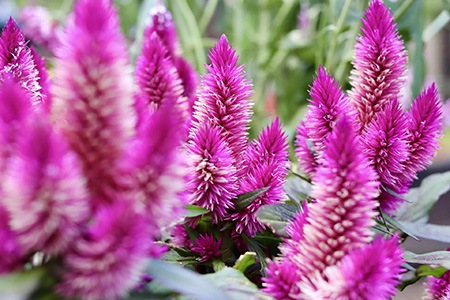
Certainly one of the most striking celosias out there, the Celosia Isertii, is known around the world using many names like Yoruba in Millson, Mende Gimnui in Sierra Leone, Fula Fulfulde Jarfundu in Nigeria, etc.
Talk about edible, these types of celosia flowers are used to create flavorings, spices, and sauces all over the world. This plant is also used as a medicine to cure problems like arthritis and all.
These flowers grow in a bush-like structure and can lead to 3 meters in height. It grows in savanna, forests, and other damp sites. You are likely to find this beautiful flower plant in Nigeria, Senegal, Angola, Zambia, and some other places.
Having a bush-like structure, these flowers are often used in bouquets, and apart from the pretty looking plant, these are mostly used as food sources.
Palmer's Cockscomb
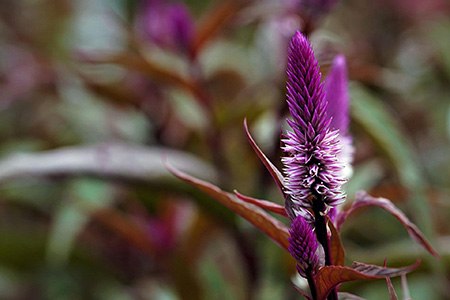
Palmer's cockscomb (Celosia palmeri) is a great place to start your adventure with these types of flowers. It's native to the lower Ria Grande Valley in Texas and northeastern Mexico, which lets you know the kind of climate it desires. It's named after Edward Palmer who collected the first specimen in 1880.
More Types of Celosia to Explore
We can't describe and discuss every celosia species out there but we can list more for you to investigate as you have time. A good starting point are the following:
- Celosia nitida
- Celosia whitei
- Celosia argentia
- Celosia isertii
- Celosia Ieptostachya
- Celosia odorata
If you can discover any celosia types past this batch, then you should notify a botanist because you may have a first-of-a-kind discovery on your hands, and it could be named after you!
Types of Celosia to Brighten Up Your Flower Bed
Celosias are renowned for their delicate and beautiful appearance. They go well in gardens, backyards, indoor use, etc.
These plants are also edible, and, therefore, it has been in cultivation for many years, gaining popularity day by day. If you plan to include celosias in your garden, it is surely going to enhance its beauty. Do you have a particular flower in mind? If not, you better look at the never-ending possibilities when it comes to types of celosia.
We tried our level best to jot down the most common varieties of celosias that are ideal for gardening and can be consumed as well. Read this article, and we assure you you will find at least one among the different types of celosia that suits your landscape assortment.



